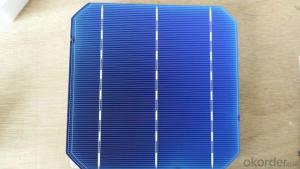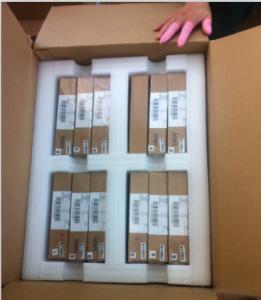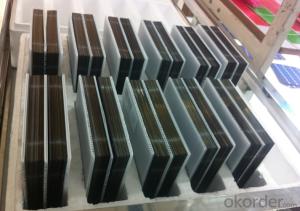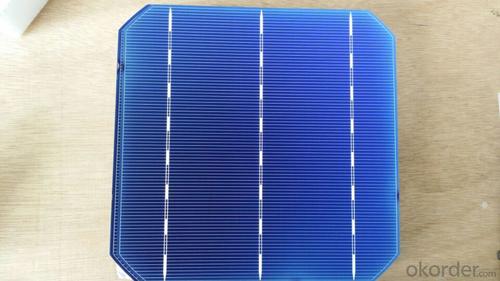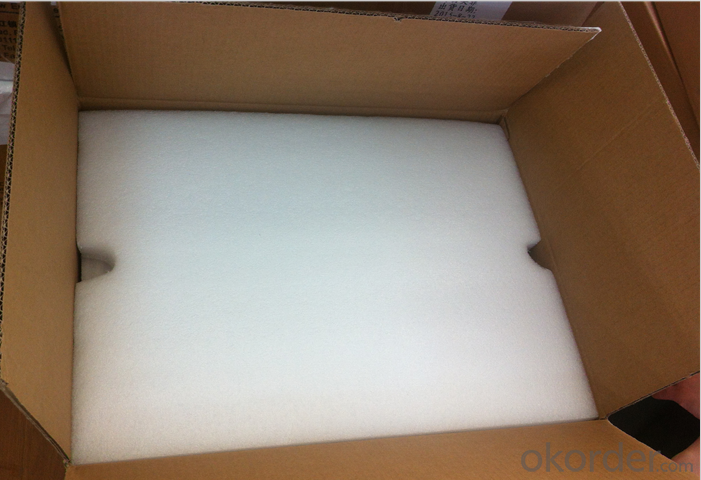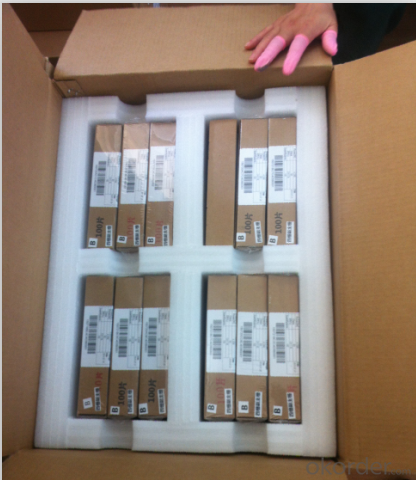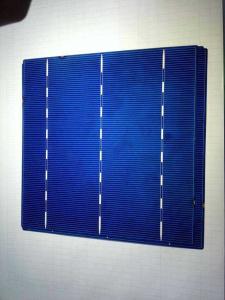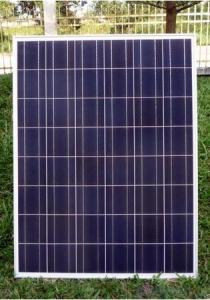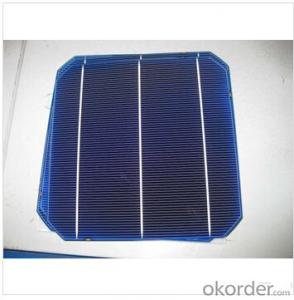Solar Cells for Dummies:156x156mm 3bb Mono Solar Cells 6x6 with Superior Quality
- Loading Port:
- China main port
- Payment Terms:
- TT OR LC
- Min Order Qty:
- 100 watt
- Supply Capability:
- 500000 watt/month
OKorder Service Pledge
OKorder Financial Service
You Might Also Like
Specification
156x156mm 3BB Mono Solar Cells 6x6 with Sperior Quality
Feature
1.High conversion efficiencies resulting in superior power output performance.
2.Outstanding power output even in low light or high temperature conditions
3.Optimized design for ease of soldering and lamination
4.Long-term stability,reliability and performance
5.Low breakage rate
6. Output power tolerance of +/-3%

Physical characteristic
Dimension: 156*156mm±0.5mm
Thickness: wafer(Si):200μm±20μm
Cell:240μm±40μm
Front: silver bus bars;dark blue/others silicon nitride anti reflection coating
Back: silver/aluminum bus bars;full-surface aluminum BSF
Warranty
25-years limited warranty on power output: 10 years/90%, 25 years/80%
Packaging
The solar cells are packed in cartons, and then pallet.
Shipping by sea or by air are both ok, it's up to customer’s choice.
We’d like to inquire the freight cost for customer after be informed exact quantity and destination address
- Q: How do solar cells perform in high-pollution areas?
- Solar cells perform less efficiently in high-pollution areas due to the reduced amount of sunlight reaching the cells. The presence of pollutants in the air, such as smog or dust, can block and scatter sunlight, thereby decreasing the overall energy output of the solar cells. Regular cleaning and maintenance of the panels can help mitigate the impact of pollution on their performance.
- Q: What is the role of solar cells in powering streetlights?
- The role of solar cells in powering streetlights is to harness sunlight and convert it into electricity. This electricity is then stored in batteries, which are used to power the streetlights during nighttime or when there is not enough sunlight available. Solar cells enable streetlights to operate independently from the electrical grid, reducing energy costs and environmental impact.
- Q: Can solar cells be used in military applications?
- Yes, solar cells can be used in military applications. They can provide a reliable and sustainable source of power for various military equipment and operations, such as powering communication systems, surveillance devices, and remote military outposts. Solar cells offer the advantage of being lightweight, portable, and environmentally friendly, making them well-suited for military use in remote or off-grid locations. Additionally, solar power reduces the dependence on traditional fuel sources, minimizing logistics challenges and enhancing operational effectiveness.
- Q: Anybody ever heard of solar roll flexible solar panel?
- The flexible solar cells is more convenient to take with you, and also easy to charge as long as you do know how to use it properly.
- Q: How to get high voltage, high current output of solar cells
- Using 880 0.5 volt 5 amp output of the panel, 440 in series as the first group, and then get a second group, then the two groups in parallel, you can get 220 volts 10 amps output
- Q: What is the lifespan of solar cells?
- The lifespan of solar cells can vary depending on various factors such as the type and quality of the cells, their usage and maintenance, and the overall conditions they are exposed to. However, on average, solar cells have a lifespan of around 25 to 30 years.
- Q: What are the disadvantages of using solar cells?
- One disadvantage of using solar cells is their high initial cost. The installation and purchasing of solar panels can be expensive for homeowners or businesses, making it less accessible for some people. Additionally, solar energy production is dependent on weather conditions, meaning that cloudy or rainy days can lead to reduced efficiency. Finally, the production of solar cells requires rare materials, such as silicon, which can have negative environmental impacts if not managed properly.
- Q: Can solar cells be used in desert environments?
- Yes, solar cells can be used in desert environments. In fact, desert environments are ideal for solar power generation due to abundant sunlight. The high solar irradiance levels in deserts provide excellent conditions for solar panels to generate electricity efficiently. Additionally, solar panels can withstand the extreme heat and sandstorms typically found in desert regions.
- Q: Can solar cells be used in drones?
- Yes, solar cells can be used in drones. In fact, many drones are equipped with solar panels to harness solar energy and power their operations. This helps to extend flight time, reduce reliance on traditional batteries, and make drones more sustainable and energy-efficient.
- Q: Can solar cells be used in power plants?
- Yes, solar cells can be used in power plants. Solar power plants, also known as solar farms or solar parks, use arrays of solar panels or solar cells to convert sunlight into electricity on a large scale. These solar power plants can generate significant amounts of renewable energy and contribute to reducing greenhouse gas emissions.
Send your message to us
Solar Cells for Dummies:156x156mm 3bb Mono Solar Cells 6x6 with Superior Quality
- Loading Port:
- China main port
- Payment Terms:
- TT OR LC
- Min Order Qty:
- 100 watt
- Supply Capability:
- 500000 watt/month
OKorder Service Pledge
OKorder Financial Service
Similar products
Hot products
Hot Searches
Related keywords
